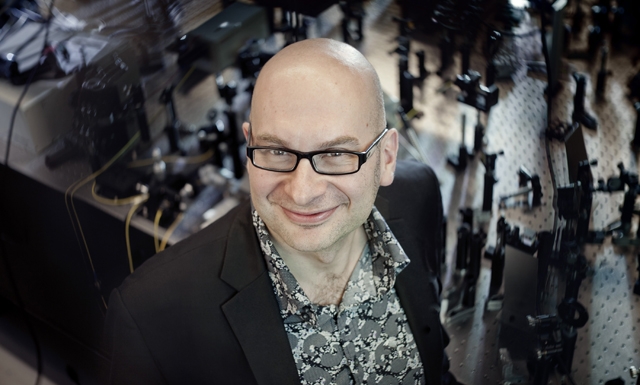Sep 15 2015
Telecommunication networks will soon reach the physical limits of current technology and in order to overcome the current bottleneck, they will have to exploit the quantum properties of light. Roberto Morandotti and his INRS team are paving the way to this technological revolution by removing the technical barriers of quantum photonics through the use of their optical chips.
Recently they directly generated cross-polarized (orthogonal) photon pairs on a chip, a first in quantum optics. Polarization will now be among the controllable parameters for harnessing light in a host of applications. The new device developed at INRS will help create low cost, high performance, energy efficient technologies.

Integrating optical components on chips compatible with electronic circuits is a key requirement for future telecommunication networks. Dr. Morandotti’s team is quickly advancing this powerful technology. They have recently designed a stable ultrafast laser based on an integrated microring resonator. They are now working on maximizing the control of photon and light beam properties to increase the functions and applications of their innovations.
As mentioned, using the polarization of light in this context to its full potential has not been possible so far. Dr. Morandotti has achieved very promising results by using the nonlinear optical effect called four-wave mixing. The experimental device devised by Dr. Morandotti’s team produces photon pairs with orthogonal polarization while eliminating photons with undesirable frequencies. The wide variety of complex quantum states that can be generated by this device has the potential to offer a tremendous advantage for optical communication and applications such as signal processing and spectroscopy.
Prestigious publication
The results of this research appeared in the prestigious peer-reviewed journal Nature Communications and are now freely available. The article (DOI: 10.1038/ncomms9236), entitled “Cross-polarized photon-pair generation and bi-chromatically pumped optical parametric oscillation on a chip,” was made possible thanks to the financial support of the Natural Sciences and Engineering Research Council of Canada, Australian Research Council Centres of Excellence, Fonds de recherche du Québec – Nature et technologie, and the individual research grant program (Marie Sklodowska-Curie Actions) of the seventh European Union framework program.